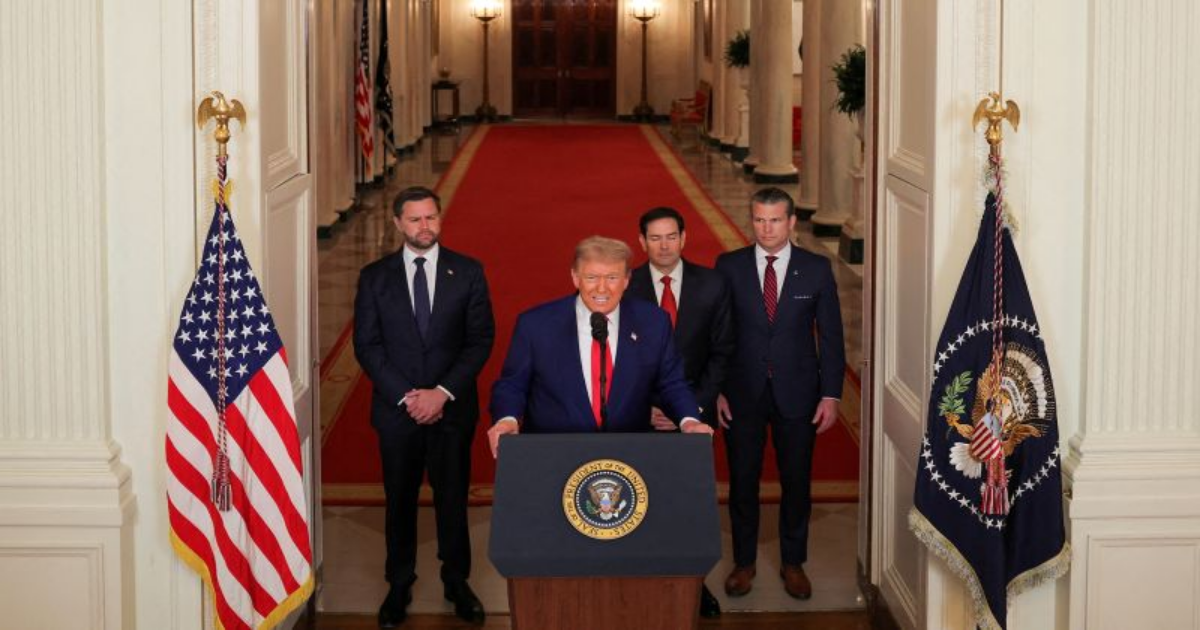CNN —
President Donald Trump declared that Iran’s nuclear enrichment facilities were “completely and totally obliterated” following this weekend’s air strikes, but the US appears to have held back its most powerful bombs against one of the three facilities included in the operation, raising questions about whether it finished the job.
In Isfahan, where nearly 60% of Iran’s stockpile of already-enriched nuclear material is believed to be stored underground, according to a US official, a US submarine hit the site with Tomahawk cruise missiles, Chairman of the Joint Chiefs Gen. Dan Caine said Sunday.
But unlike the other two Iranian facilities targeted in the operation, B-2 bombers did not drop massive “bunker-buster” bombs on the Isfahan facility, multiple sources told CNN. The damage to the facility appears to be restricted to aboveground structures, according to Jeffrey Lewis, a weapons expert and professor at the Middlebury Institute of International Studies who has closely reviewed commercial satellite imagery of the strike sites.
Even if the US was successful in destroying Iran’s facility at Fordow — another underground site that housed centrifuges needed to enrich uranium, which the US hit with 12 bunker busters — the obvious survival of Isfahan has raised questions about whether Trump achieved his stated goal of “a stop to the nuclear threat posed by the world’s No. 1 state sponsor of terror.”

“This is an incomplete strike,” Lewis said. “If this is all there is, here’s what left: the entire stockpile of 60% uranium, which was stored at Isfahan in tunnels that are untouched.”
A satellite image taken by Airbus shows significant damage to the Isfahan site and signs that the underground portion of the facility was hit, according to the Institute for Science and International Security, which analyzed the image. But there are layers of tunnels at the facility, so it’s unclear how far the damage goes.
When reached for comment, the office of Secretary of Defense Pete Hegseth told CNN, “We do not have anything additional to share at this time.”
Vice President JD Vance told ABC News’ “This Week” on Sunday that the administration plans to “work in the coming weeks to ensure that we do something with that fuel and that’s one of the things we’re going to have conversations with the Iranians about.”
“What we know is they no longer have the capacity to turn that stockpile of highly enriched uranium to weapons-grade uranium, and that was really the goal here,” Vance added.
“Enriching uranium up to the point of a nuclear weapon — that was what the president put a stop to last night.”
But multiple sources familiar with the latest US intelligence on both sites and the Trump administration’s objectives in launching the strikes told CNN that Isfahan’s underground facilities — which likely remain intact — must be addressed to prevent Iran from developing nuclear weapons.
And on Thursday, the UN nuclear watchdog said that Iran was building a new nuclear enrichment plant at Isfahan that Tehran has said it will soon bring online.
The Iranians “have the material, they still have the capacity to make centrifuges, and they still have at least one giant underground centrifuge facility where they can install their centrifuges,” Lewis added. “So, it’s just not done.”
Related vertical video Analysis: What is a bunker buster?
It remains unclear why US military planners decided against using bunker busters — officially known as Massive Ordinance Penetrators, or MOP, on Isfahan. The bombs are designed to penetrate deep underground, and sources say the tunnels under Isfahan are even deeper than those at the other two locations.
But even before the strikes were carried out, some US officials had raised pointed doubts about whether the MOPs was even capable of destroying the deeper tunnels.
While there were some questions about whether US bunker busters were capable of destroying the underground portions of Fordow — which had been the focus of the administration’s planning for the operation — multiple sources familiar with the discussions told CNN the likelihood of successfully doing the same at Isfahan was an even bigger question.
At Fordow, the depth of the facility almost certainly requires several MOPs that impact in nearly the exact same spot, something that would normally be a tall order except that Iran’s air and missile defenses are functionally disabled, one US official familiar with the matter said.
But, “Isfahan is a challenge,” another source familiar with the latest US intelligence told CNN.
“The tunnels at Isfahan are just so deep,” Lewis said. The MOP was designed to handle a site like Fordow. “If they put something deeper, we either gotta design a new bomb or we have to use a nuclear weapon.”
CNN’s Kylie Atwood contributed to this report.

